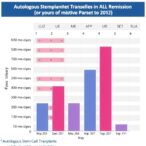
In the ever-evolving landscape of prostate cancer diagnostics, the introduction of magnetic resonance imaging-guided prostate biopsies (MRI-PB) represents a groundbreaking shift in medical practice. Historically, prostate biopsies have relied predominantly on transrectal ultrasound-guided methods (TRUS-PB), but recent advances have opened new avenues for more precise and effective cancer detection. A comprehensive systematic review and network meta-analysis recently published in BMC Cancer offers a critical comparison of these biopsy strategies, shedding light on which approaches provide the most reliable diagnostic yield in prostate cancer detection.
Prostate cancer remains a significant health challenge worldwide due to its high incidence and potential for morbidity. Accurate and timely diagnosis is crucial to tailoring effective treatment regimens and improving patient outcomes. Through a painstaking aggregation of data from 24 randomized controlled trials, this new study evaluates eleven distinct prostate biopsy strategies, providing a contemporary synthesis of evidence that had previously been scattered and inconclusive.
Unsurprisingly, the analysis underscores the superior diagnostic performance of MRI-guided approaches compared to conventional TRUS biopsies. Particularly, MRI-cognitive prostate biopsy (MRI-cognitive-PB) showed a remarkable improvement in overall prostate cancer detection rates. The data reveal an odds ratio of 3.92, with a 95% confidence interval ranging from 2.17 to 6.41, compared to the standard TRUS-guided biopsy targeting 10–12 cores. This indicates that patients who undergo MRI-cognitive-PB are nearly four times more likely to have their cancer detected, a statistically and clinically significant finding.
However, the efficacy of MRI-guided techniques is nuanced and context-dependent. When focusing exclusively on patients who had previously negative biopsy results, MRI-cognitive-PB still outperformed standard TRUS-PB, which is critical because repeat biopsies often occur in these cases. This strengthens the argument for incorporating MRI guidance in repeat biopsy settings, where missing a clinically significant tumor could delay life-saving interventions.
Equally compelling is the performance of MRI/TRUS fusion biopsies (MRI/TRUS-PB), which integrate real-time ultrasound imaging with pre-acquired MRI data to pinpoint suspicious lesions during the biopsy procedure. While MRI/TRUS-PB exhibited an odds ratio of 1.78 (95% CI: 1.02–3.07) in overall cancer detection compared to TRUS(10–12)-PB, its notable strength emerged when prostate volume was less than or equal to 50 mm³. In this subset, MRI/TRUS-PB was significantly more effective, suggesting that prostate size may influence the optimal choice of biopsy method.
Despite these promising results, the study highlights limitations in achieving improved detection of clinically significant prostate cancer (csPCa) and clinically insignificant prostate cancer (ciPCa) with MRI-cognitive-PB. The lack of substantial advantage in these finer-grained diagnostic categories calls for cautious interpretation and underscores the complexity of balancing sensitivity against overtreatment risks.
The nuanced findings of this meta-analysis reflect ongoing challenges in contemporary prostate cancer diagnostics. While MRI-guided biopsies clearly outperform traditional methods in many respects, the heterogeneity of patient populations, tumor characteristics, and imaging protocols complicate universal recommendations. The study’s authors advocate for more direct, head-to-head comparisons among MRI-PB techniques to refine protocols and optimize patient outcomes further.
One cannot overstate the clinical implications of these findings. Optimizing prostate biopsy methods is not merely academic—it profoundly affects patient experiences, healthcare resource utilization, and survival outcomes. For instance, reducing unnecessary biopsies through precise targeting can minimize complications such as infection and bleeding while ensuring that significant cancers are not overlooked or delayed.
Technological advances contributing to MRI-guided biopsies include improvements in image resolution, software fusion algorithms, and operator expertise. These factors collectively enhance lesion visualization and targeting accuracy. However, barriers such as cost, accessibility of high-quality MRI facilities, and training requirements remain prevalent, especially in resource-constrained settings.
Furthermore, emerging imaging biomarkers and artificial intelligence applications are poised to supplement existing biopsy strategies. By integrating machine learning with multiparametric MRI data, future protocols might better stratify cancer risk and guide biopsies, potentially overcoming some limitations identified in current MRI-PB techniques.
This meta-analysis, published in early 2025, arrives at a pivotal moment when prostate cancer diagnostics are at the cusp of personalized medicine. Its robust methodology and comprehensive scope provide actionable insights for clinicians and researchers alike. Implementing MRI-guided strategies could herald a new standard, especially in patients with previous negative biopsies or smaller prostate volumes.
Nonetheless, as the authors note, the evolution of biopsy techniques must be evidence-driven and patient-centered. Prospective clinical trials designed to directly compare various MRI-guided approaches with long-term follow-up on clinical outcomes will be essential to establish definitive practice guidelines.
In summary, this thoughtfully executed review crystallizes the benefits and limitations of prostate biopsy strategies in the contemporary era. It highlights MRI-cognitive-PB as a leading technique for improved cancer detection while acknowledging the need for further refinement and comparative data. As the medical community pushes to minimize diagnostic uncertainty and enhance patient-centric care, such meta-analyses provide critical compass points guiding future innovation and implementation.
This study’s findings are bound to stimulate extensive discourse and research into prostate biopsy methodologies, amplifying efforts to reduce prostate cancer mortality and morbidity worldwide. Amidst ongoing debates, the evidence decisively pivots toward integrating sophisticated imaging into routine practice, a transformative leap that holds promise to save and improve countless lives.
Subject of Research: Prostate biopsy strategies in prostate cancer diagnosis.
Article Title: Comparing the biopsy strategies of prostate cancer: a systematic review and network meta-analysis.
Article References:
Huang, Y., Wei, C., Chen, F. et al. Comparing the biopsy strategies of prostate cancer: a systematic review and network meta-analysis. BMC Cancer 25, 786 (2025). https://doi.org/10.1186/s12885-025-14203-y
Image Credits: Scienmag.com
DOI: https://doi.org/10.1186/s12885-025-14203-y
Tags: advancements in prostate cancer diagnosticscancer detection methodsdiagnostic performance of prostate biopsiesevidence-based cancer detectionMRI-cognitive prostate biopsyMRI-guided prostate biopsiespatient outcomes in prostate cancerprostate cancer biopsy strategiesprostate cancer morbidity and incidencerandomized controlled trials in oncologysystematic review of biopsy techniquestransrectal ultrasound-guided biopsies



